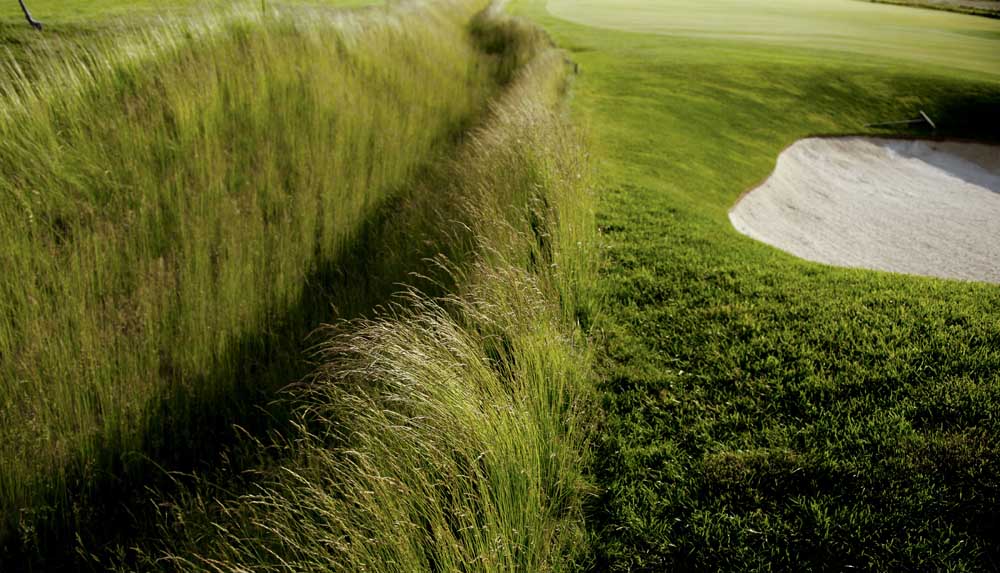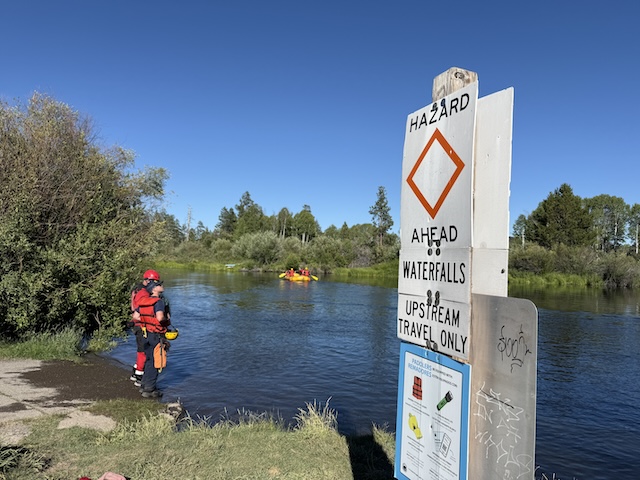Oakmont can be a real ditch
Published 12:00 am Tuesday, June 14, 2016

- Jeff Swensen / The New York TimesThe drainage ditches at Oakmont Country Club will provide a most unusual hazard for golfers at this year’s U.S. Open, which tees off Thursday.
For a golf course considered one of the most arduous in the country, the 18 holes at Oakmont Country Club, which will host the U.S. Open for a record ninth time starting Thursday, lack many of the most fundamental golf design elements.
There are no ponds, lakes, streams or brooks adorning the holes at Oakmont, in suburban Pittsburgh. In the past dozen years, more than 14,000 trees have been removed from the grounds. A majority of the holes are straightforward, arcing neither left nor right in traditional doglegs.
Trending
There is, however, one idiosyncratic feature of Oakmont that is unlike any other regularly seen in U.S. major championship golf. Since the course opened for play in 1904, Oakmont has had deep, quirky and vexing drainage ditches that can affect the play on as many as 10 holes.
The ditches, waist high in some places, were a functional and architecturally strategic element of the original layout, funneling rainwater off the course while simultaneously ensnaring the wayward golf ball into a shadowy abyss.
Technically, the ditches are considered Oakmont’s only water hazards, even if the fast-moving groundwater rarely remains in the trenched channels long enough to puddle. But a golf hazard can come in many forms as long as it lurks to unnerve and exasperate an inattentive golfer. And for 112 years, many a pleasing round has lost its promise in the bottom, or sloped side, of an Oakmont ditch.
“I don’t know if there’s any golf course that has anything quite like these ditches,” said Mike Davis, executive director of the USGA, which conducts the U.S. Open. “They’re water hazards, but unlike most water hazards, you can see your ball and maybe get your ball out.
“Although that is not a sure thing, either.”
Undeniably, it is the riddle of the nonwater water hazard that makes an Oakmont ditch such a distinctive golf conundrum.
Trending
Most balls that land in typical water hazards are submerged, so the golfer is routinely forced to take a stroke penalty and play on. But Oakmont’s virtually dry water hazards, while rugged and often steep, are covered in a layer of fine fescue grass that can invite a player to ponder a penalty-free recovery.
Why waste a stroke if it is possible to knock the ball to a better spot on the golf course — if not to the green?
“Mentally, golfers get tricked,” said John Zimmers, Oakmont’s longtime course superintendent. “They think: ‘Hey, my golf ball is right there. I can get a club on that.’
“But trying to play it out creates all kinds of havoc.”
Or, as Paul Azinger, lead golf analyst for Fox Sports and a 12-time winner on the PGA Tour, said, “Sometimes you’re just unwilling to give up a shot.”
Azinger conceded that most times the wise choice at Oakmont would be to take the punishment of a one-stroke penalty. But he also said that the ditches could be especially irksome.
“It can affect your attitude if your ball is hopping along and just goes in the ditches instead of hopping over them,” Azinger said. “They’re in play, and they’re very frustrating.”
The fescue in the ditches is wispy and unpredictable. The lie, most likely uneven, is treacherous. One swing might send the ball into another section of the ditch and bury it deeper still. Now what?
“I’m telling you,” Zimmers said, “if there were water in those ditches, they wouldn’t be as difficult.”
Oakmont’s roughly 700 members have learned their lesson.
“The ditches are a pain in the butt, but most of us know that we’re better off just taking a drop and the penalty,” said Gerry Hickel, a member of Oakmont’s archive committee and one of the club’s historians. “We do that seven out of 10 times, at least.”
That may be the course chosen by recreational golfers, but golfers on the PGA Tour have exceptional skills and will not be so quick to turn away from a challenge.
“As good as they are, there might be a belief that they can get their ball out,” Davis said. “There will be some players who try that and do not get it out. But there will be others who hit it out and we’ll all be saying, ‘That was spectacular.’”
Davis, in fact, said he believed that in some cases a player whose ball tumbled into a ditch would still be able to advance it 100 or 150 yards. When was the last time that happened from a water hazard?
“That’s what makes the ditches so strategically fascinating,” Davis said. “Yes, standing on a tee at Oakmont, you don’t see an ocean or a pond or lake. But you know the ditches are out there. Sometimes they are literally right beside the fairway.”
Curtis Strange, the last golfer to win back-to-back U.S. Open championships and who will be a Fox Sports on-course reporter during this week’s tournament, said the players were indeed cognizant of the location of every prominent ditch because they are so punitive.
“They’re narrow enough that if you get into one, and get lucky enough for a lie, you never have a stance,” said Strange, who finished fourth at the 1994 U.S. Open held at Oakmont.
While the Oakmont ditches were plainly drawn on the earliest sketches of the golf course, many remain in places that might capture the drive of only a hacker, not a top professional golfer. But on many other holes, the ditches are unquestionably in play for anyone trying to navigate Oakmont’s layout, which is punishing for a variety of other reasons, most notably for lightning-fast greens and, perhaps, the most intimidating bunkers in U.S. championship golf.
Asked to list certain holes where a ditch or ditches would most likely come into play, Davis last week mentioned the second and ninth holes, where there are ditches alongside the left side of the fairway; the 12th hole, where balls in the drive zone and the layup area may have to skirt a ditch; and the 18th hole, where there is a ditch left of the drive zone.
In general, Oakmont’s ditches, some of them cut across fairways, will have to be contemplated, respected and avoided in every round at the 116th U.S. Open.
That has been the case since golf was first played on the site, a former pasture until teams of mules and horses reconfigured the landscape.
“And the ditches have been here since Day 1,” Davis said. “They were always central to the architecture and to the strategy of playing the golf course.”
At a golf course that is not overly devious, the ditches are the places where an apparently decent shot can trickle into a seemingly benign position. Nevertheless, what follows is often a thorough unraveling.
The last time the U.S. Open was at Oakmont, in 2007, Stephen Ames, a four-time winner on the PGA Tour, shared the lead in the opening stages of the final round. On the par-4 No. 7, Ames hooked his tee shot into a ditch, tried to hit his ball out and eventually walked away with a triple bogey.
Ames never threatened the tournament leaders again, eventually shooting 76. He tied for 10th.








